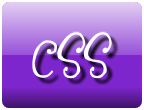
There are three types of style sheets: Embedded, External (linked) and Inline.
Embedded style sheets are written within the <head> tag of the HTML document. Embedded styles are best used in a single web page only because if you were to change any formatting in an embedded style, you would have to change that information in the <head> tag on every page.
Inline style sheets are most useful when you override formatting placed in an embedded or external style sheet or when you have one particular element in your whole site that will use this one particular style and does not need to be reflected in a cascading style sheet. Inline styles are not as powerful as external or embedded style sheets. If you were to make a change to the style in an inline style sheet, you would have to change every page containing that particular element you wish to change.
External style sheets, or linked sheets, are the most powerful style sheet of all three styles. You can literally make one change on the style sheet and the change will occur on every page whether there are 2 pages or 2,000. Linking each page on the web site to this external, or linked sheet, will make the changes possible. Instead of the style sheet having a file extension of .html, it would have a file extension of .css. It contains a list of styles with no html coding.
CSS is a language for defining the formatting used in a Web site and are the easiest type of style sheet to use for a web site consisting of multiple pages. You can format any of the items listed below in 1 cascading style sheet for a whole web site.